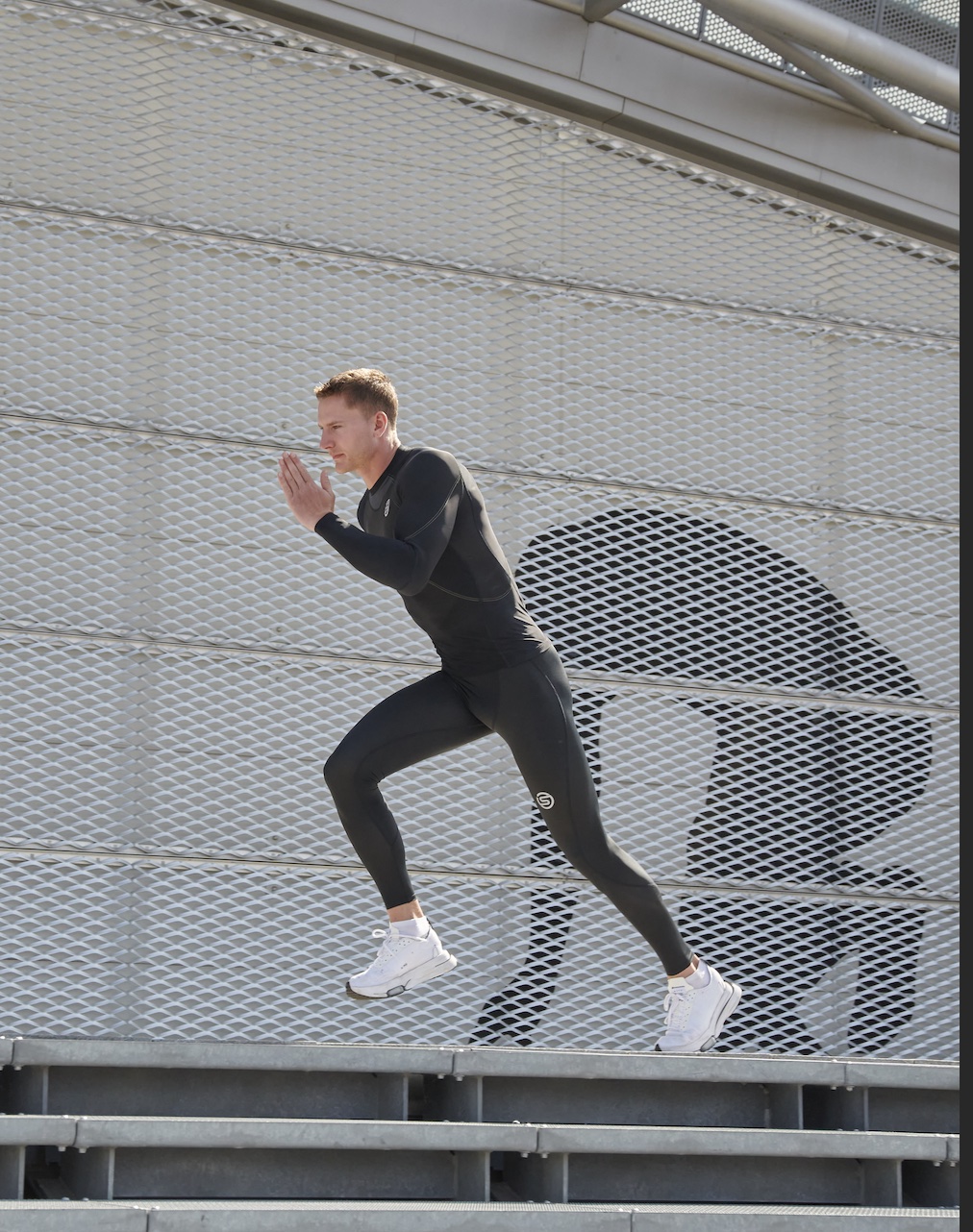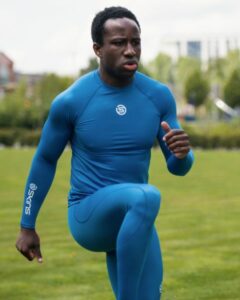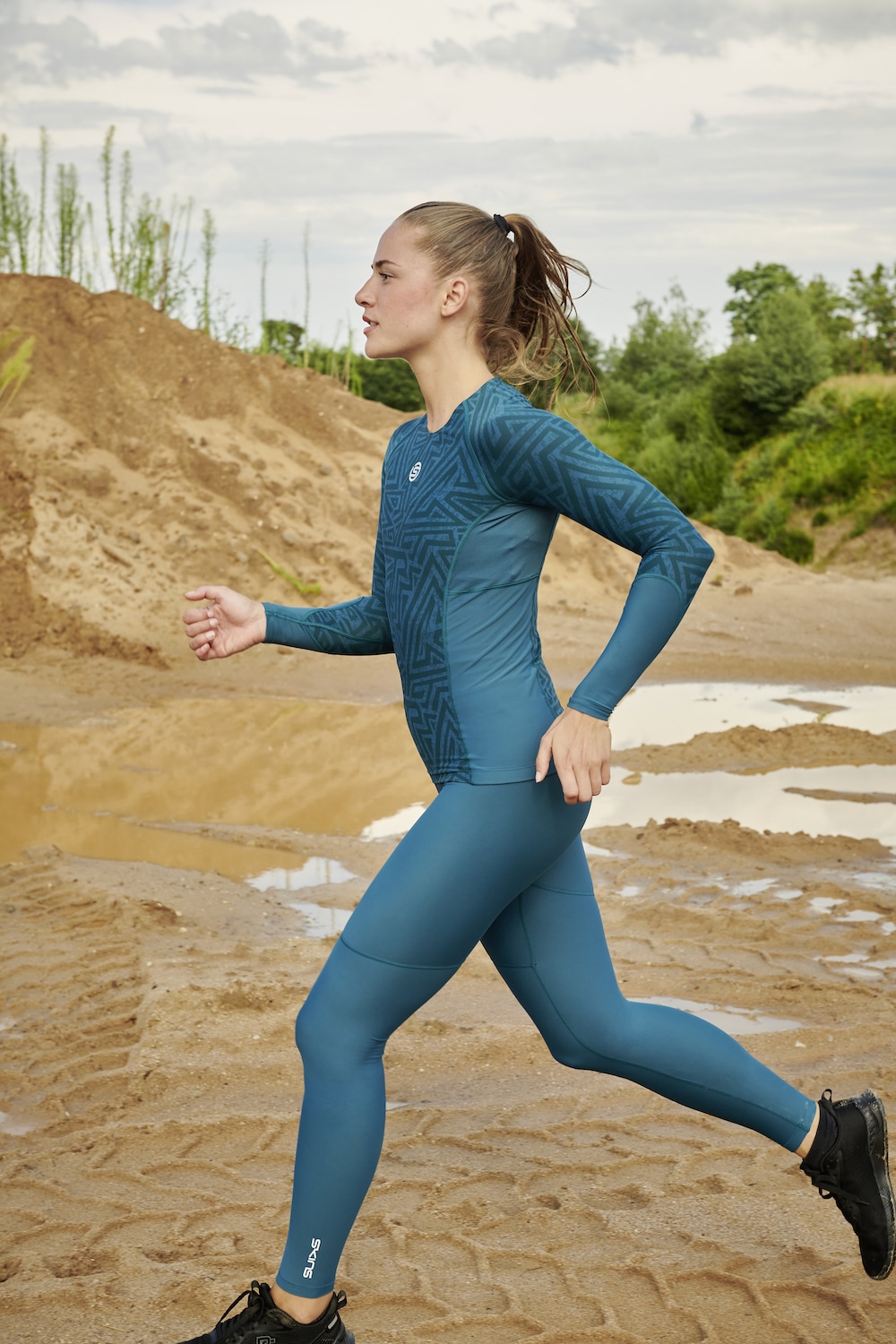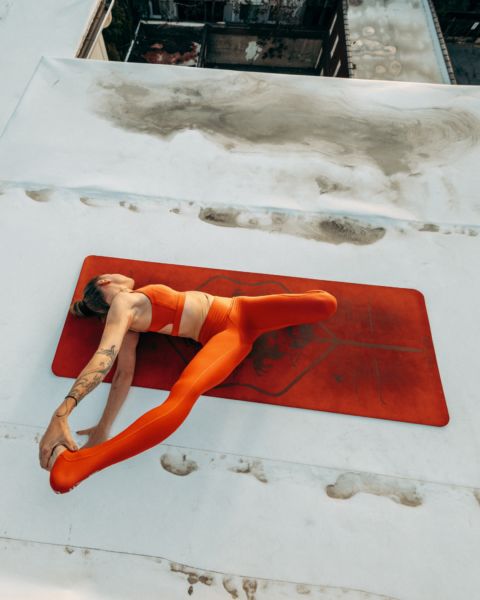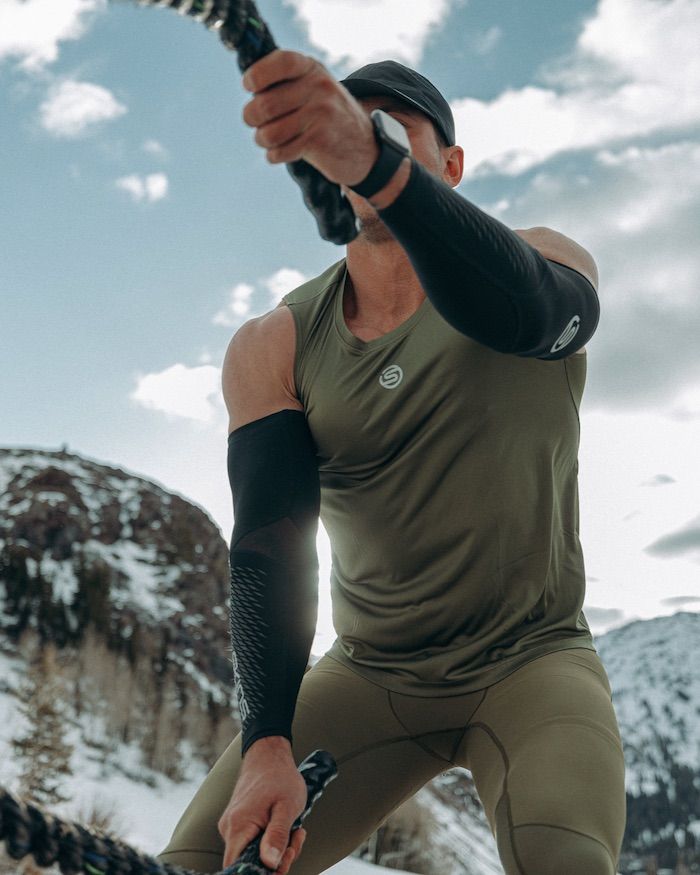THE IMPORTANCE OF WARMING UP
SKINS Head Running Coach talks about the importance of warming up.

One of the most important aspects of any training is warming up. Most of us go from being sat down at a desk or from a sedentary position straight to exercise, and if you try going from being passive to working hard, your body won't work to its full capacity. Plus, you're more likely to injure yourself!
Warming up is particularly important if you're doing interval sessions as you need your muscles to be fully functioning to get the most out of yourself. The best way to do this is by using something called the RAMP protocol. RAMP stands for: Raise, Activate, Mobilise and Potentiate, all of which work together to improve your performance.
RAMP PROTOCOL
Raise: To start the warm-up process, we need a light aerobic activity to increase the heart rate and move blood around the body, mainly to the muscles. This increases the muscle temperature, which puts them in a better working condition when you start training.
Activate: By activating the muscles you use during running, the signals from your brain start firing to your muscles and get them ready to move. Jogging increases the muscles' temperature, and then your activation drills switch the muscles on and get them ready to go.
Mobilisation: The third part of the warm-up is where you start to try and replicate the movements of how you run to increase the range of motion in the muscle. By doing this, you then improve the range of motion you can take with each stride helping with stride rate and how fluid you feel when running.
Potentiation: Finally, we want the muscles to be ready to hit the paces from the gun, which we do through potentiation. This is where you put the muscle under a small amount of stress, resulting in them being ready to fire at the desired intensity of your session. Furthermore, research has shown that strides like these before a session increase oxygen uptake and improve performance; therefore, helping you run faster for the same effort!
The above protocol has been shown to improve both racing and training performance whilst also reducing injury risk. A full warm-up protocol should be used before races and before hard training sessions such as intervals sessions or 'threshold/tempo runs. Carrying out a good warm-up will help reduce the 'lag' you feel in the first few reps when you're trying to get used to running fast. This will help improve the quality of your race or session and hopefully help you get closer to your goals!
Before each easy run/long run, you don't need to go through the whole RAMP protocol as the session intensity is lower. However, it is still essential to get the body moving! We would recommend doing some mobilisation and activation work to get your body ready to go. Walking drills are good to do, as well as leg swings and some glute activation work. It's also good to take the first couple of mins of your easy runs a bit slower to wake the legs up before settling into a nice rhythm.
Keep reading to see a detailed description of how to carry out a RAMP warm up with drills and explanations. SCA members head to the SCA Insta group to see a visual demonstration of the drills.
RAMP WARM-UP WITH DRILLS
1) Firstly, start by doing an easy 10min jog. This can start as a walk and progress into a jog, but you should be working at around 2-3 out of 10 effort-wise. We are just trying to increase the blood flow from the body to the muscles in this period.
2) Following a jog, complete the following 4 activation drills: Walking Leg Tucks, Walking Hamstring Touches, Walking A-Drill and Ankle Walkouts.
3) In the third stage, we mobilise the muscles ready for our strides. Some drills in which we can mobilise our muscles are: Skipping A-Drill and B-Drill, High Knees, Ladder Runs, Skipping for Height and Straight Legged Running.
4) Finish off with a few runs, which are termed as 'strides'. This is where you do 4/5 shorter runs to potentiate the muscles. Generally, something between 15-20secs or ~ 80-100m is enough and complete with a short recovery in between (30-60secs).
Walking Leg Tucks - Drive your knee up to 90 degrees, clasp your hand together, hold your raised leg just below the knee, and pull your knee into your chest. Keep your toes pointing to the sky and go up on the forefoot at the end before cycling through onto the opposite leg.
Walking Hamstring Touches - Start by putting your right heel into the ground out in front of you. Put your hands on your hips and push them down the back of your hamstring, getting as close as you can to your ankle. Keep a straight back whilst doing this. Repeat on the other leg.
A-Drill - Hip and Knee angle need to be at 90 degrees no more! Toes should always be pointing to the sky. Shoulders relaxed and maintained running arms to engage your core. Head up to maintain good posture.
Ankle Walkouts - This is essentially a forward's moonwalk. Start with your hands on your hips, looking forwards. Drop your hips slightly and put your right heel into the group, with your toes pointing upwards as high as they can. Then simultaneously lift the left foot off the floor, push your right foot through the ground until you are onto your toes, and repeat on the other leg.
Skipping A-Drill - Like the walking drills, you are aiming to practice getting your knee into the 90/90 position. This time you are going to bounce whilst doing it, which requires some rhythm and coordination! Start with two feet on the ground, then drive up with the right knee, bring your feet back together and then repeat on the left. Each step requires a bounce. Right Knee, Together, Left Knee, Together etc.
Skipping B Drill - Similar to the A Drill, but instead of bringing the knee just up and down, you will add a flick with the leg at the end. Drive to 90 degrees at the knee, then cycle/flick the leg down to the floor and land underneath the centre of mass. Keep your toes turned upwards to land on the balls of your feet.
High Knees - Practicing driving the knees to 90 degrees in a running action. Do this over a short distance and aim for as many foot contacts with the floor as you can. Use your running arms, keep a stable core and straight back. Look forwards whilst doing this too.
Ladder Runs - This is about practising planting with your forefoot with a fast turnover. If you have ladders, put one foot in each space to practice doing this. If you don't have ladders, try and contact the ground as many times as you can in a short distance.
Skipping for Height - These drills practice explosive power and driving high off the ground. Start from a standing position and drive into the A-Drill position in the air. Land on the same leg on the balls of your feet, cycle onto the other leg and drive upwards again into the same position. This drill aims to get lots of height and not go too far forward.
Straight Legged Running - Lock your legs out straight and run almost like a pair of scissors landing on the balls of your feet. Ensure you keep a straight back and engaged core and don't create the range of motion by bending your back. Keep lots of small movements, to begin with, and lengthen your stride as you pick up speed.
Curious about SKINS Club Athletico? Discover more.



